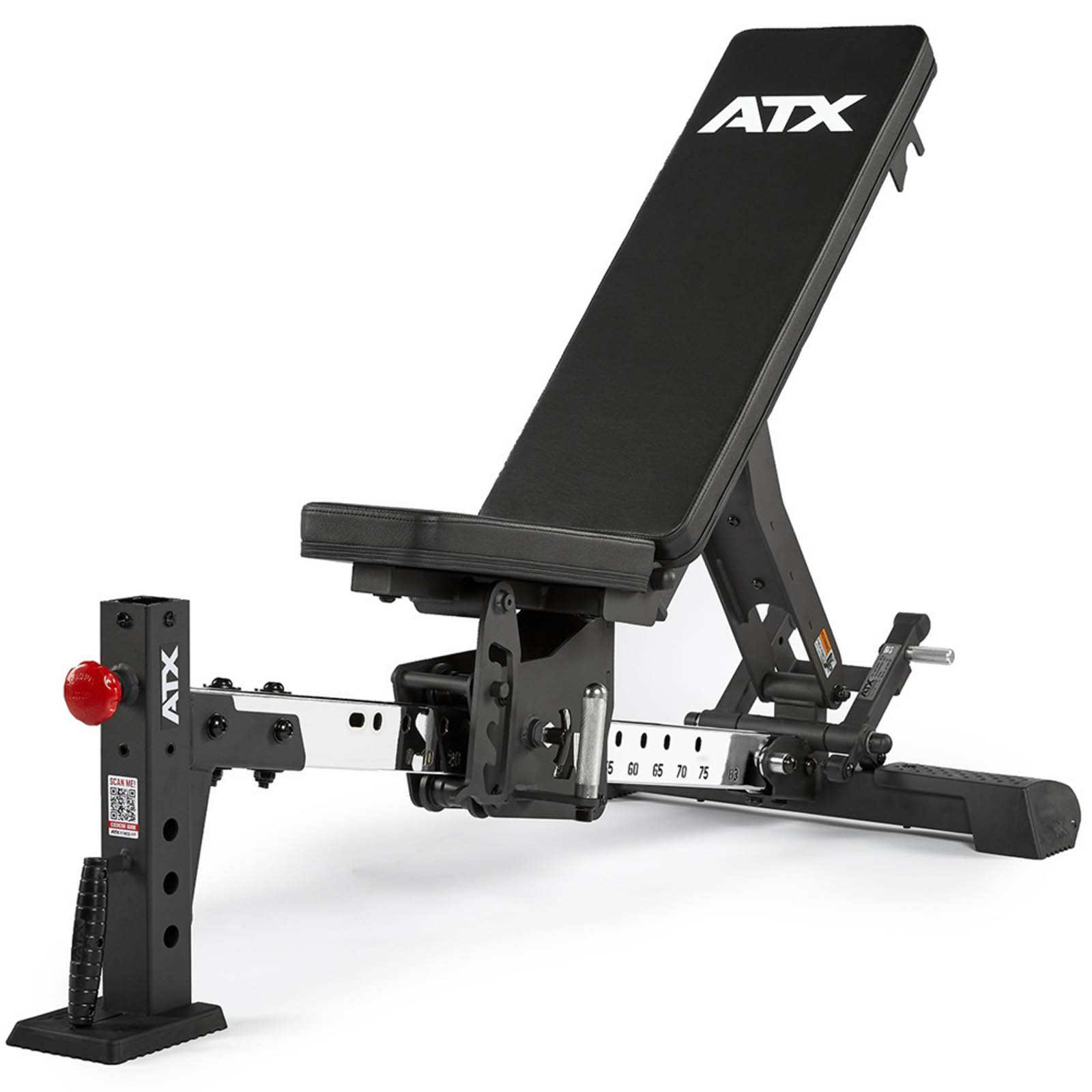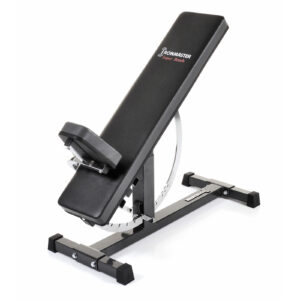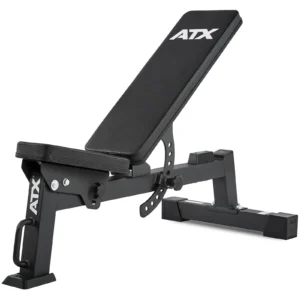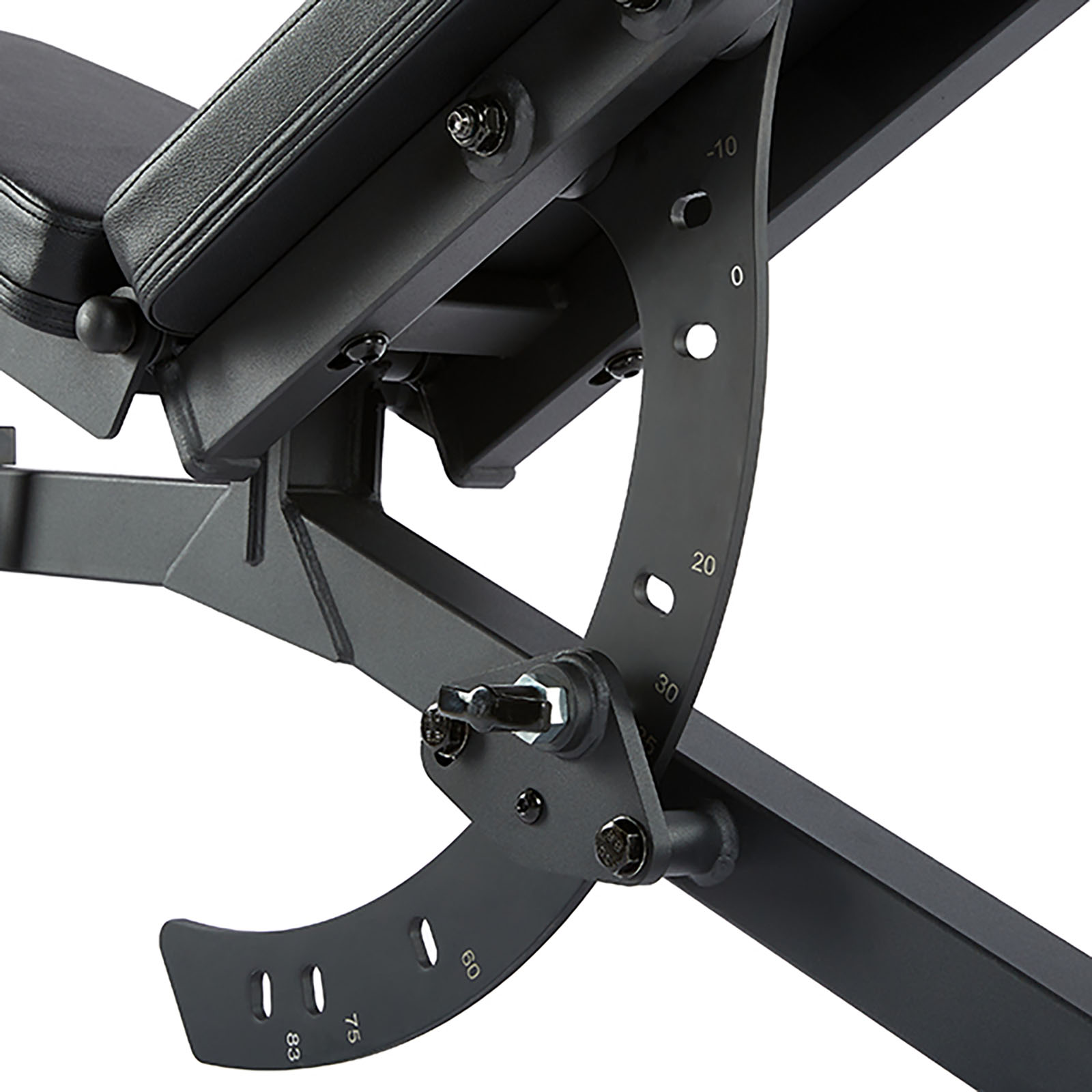
Adjustable Bench Press, FID & Utility Benches
Adjustable bench presses have the advantage of being able to change the angle of the back pad, opening up a huge variety of exercises such as decline bench press, incline rows, and seated overhead press.
Our adjustable weight benches (also known as FID benches or utility benches) are among the most cost-effective and space-efficient machines available for any gym owner. Whether you’re looking to kit out a commercial gym or just starting out on your weight lifting journey, below you will find an adjustable bench suitable for you.
- Easy to adjust
- Flexible angles & positions
- Robust construction
- Compact footprint
- Safety mechanisms
-
This item is in stock!

Ironmaster Super Weights Bench
SKU: IM SUPER -
This item is in stock!

ATX® Flat Incline Bench 610
SKU: ATX-MBX-610 -
This item is in stock!

ATX® Folding Weight Bench Black
SKU: ATX-FMB-800-B
Showing all 3 results
If you’ve been browsing benches, you’ll notice a lot of sites are selling the same generic designs, but with the number of moving parts in an adjustable bench you should stay away from generic brands with no reputation.
We pride ourselves on selling high quality gym equipment for affordable prices. All of our benches are manufactured by reputable brands in factories with stringent safety testing and quality control procedures.
Ironmaster and ATX have been in the market for decades, and all of their products represent years of continual improvements. But don’t just take our word for it: if you search their names you’ll find thousands of reviews saying the same thing.
Weight LiftingFrequently Asked Questions
Do I need an adjustable bench?
If you’re looking to do more exercises than just flat bench – then 100% yes. An adjustable bench is an easy way to add countless exercise variations to your playbook. And all of our adjustable benches are still suitable for flat bench press.
If you’re looking for even more versatility, get a bench that accepts optional attachments. These attachments can transform your bench into a preacher bench, leg extension, leg curl or pec fly machine.
Should I buy a decline bench press?
Decline bench press is a good exercise, but it doesn’t provide any benefits which can’t be gained from other exercises. So be honest with yourself – how often will you actually be decline benching?
You may also find your other equipment may not be suitable for decline bench press. You need to double check your rack to make sure you can set up your j-hooks and spotter bars low enough.
But of course if decline bench is your favourite exercise then go for it!
Why do none of your benches go to 90°?
You’ll notice that most of our adjustable benches can go up to a maximum back angle of 80°-85°, and none of them can sit completely upright. The reason for this is that an 80°-85° angle is a better position for seated exercises. It is also the angle of most traditional seats you’ll find around a dinner table or office – siting with a 90° angle feels unnatural, especially with the high back rest.
Which adjustable bench press should I buy?
Trying to find the right bench for your needs can be a daunting task, here is an overview of the main features setting each bench apart from the rest:
Ironmaster Benches
- Ironmaster Super Bench – Very compact and lightweight, the optional attachments make it extremely space efficient and versatile for home gyms or studios with space constraints.
- Ironmaster Super Bench Pro – Almost identical to the Super Bench but sits lower to the ground (45cm), has the same number of optional attachments.
ATX Benches
- ATX Multi Bench 102 – Great for beginners or those on a budget.
- ATX FID Bench 520 – Lightweight and easy to move around, great for those on a budget but who are still looking to add optional attachments.
- ATX Flat Incline Bench 610 – The sturdiest domestic bench on the market. The backrest pad is slightly thinner than standard which gives more range of motion and a better stretch on pressing exercises.
- ATX Weight Lifting Bench with Decline (620) – Large range of adjustment angles: from -15° to 82°
- ATX Multi Bench (650) – The unique roller adjustment system makes it unbelievably secure and easy to use.
- ATX Commercial FID Bench (660) – A heavy duty bench with a range of optional attachments. Perfect for the personal trainer who is tight on space.
- ATX Warrior Flat Incline Bench (750) – No knobs or pins make it durable for commercial gyms.
- ATX Warrior Bench Slim Backrest (760) – Virtually identical to the 750 bench but with a slimmer backrest pad, which increases your range of motion on bench press to give you the ultimate pec stretch!
- ATX Utility Bulls Bench (800) – The big daddy of adjustable benches. Very heavy duty making it nearly unbreakable, each piece is laser cut for added precision.
How to adjust your bench?
This will depend on the bench. Adjustable gym benches have a variety of different adjustment mechanisms. The most common would be a pop pin style arrangement. You simply disengage the pin and move the bench to your desired angle.

Saw tooth or ladder bar designed adjustable benches have grown in popularity over the years. This style bench is adjusted by lifting pad support arm and moving it to the new position. These benches are a bit noisier than the pop pin benches – there is a bit of metal-on-metal noise. But the process is a lot easier – there is no frustration of not being able to get your pin into the hole.

There are many other styles, but the above two would make up many benches you will encounter in the gym. Modern benches often feature angle markings on the adjustment system. This makes adjusting your gym bench a whole lot easier. You just need to remember the angle you use on the desired exercise.
What Angle should I use for Incline Bench?
The consensus is that a bench set to an incline of 30 to 45 degrees will target your upper chest the best.
Anything lower than that and you will start using more of your middle/lower chest. Anything higher and you will be placing more stress on your shoulders.
To get the best angle for incline bench suitable for your body levers, you will have to do some experimenting. The angle that works for you might not work for your training partner.
